Andreas Pitsillides
Transfer of Manure as Fertilizer from Livestock Farms to Crop Fields: The Case of Catalonia
Jun 14, 2020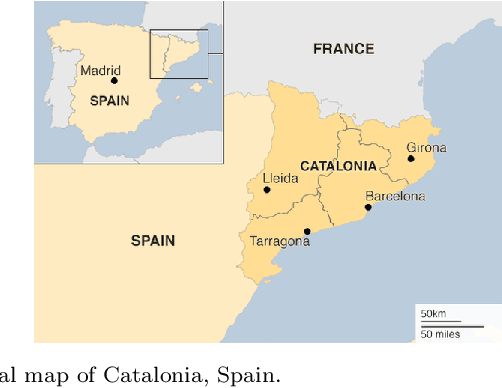
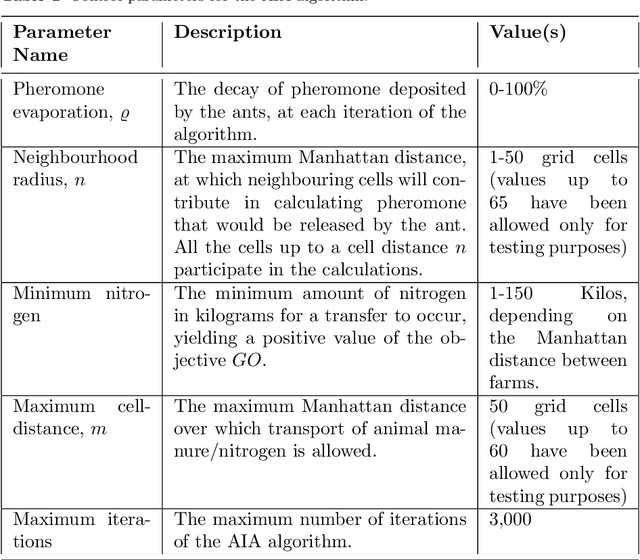
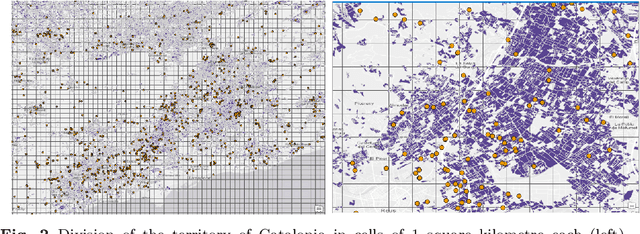

Abstract:Intensive livestock production might have a negative environmental impact, by producing large amounts of animal manure, which, if not properly managed, can contaminate nearby water bodies with nutrient excess. However, if animal manure is exported to nearby crop fields, to be used as organic fertilizer, pollution can be mitigated. It is a single-objective optimization problem, in regards to finding the best solution for the logistics process of satisfying nutrient needs of crops by means of livestock manure. This paper proposes three different approaches to solve the problem: a centralized optimal algorithm (COA), a decentralized nature-inspired cooperative technique, based on the foraging behaviour of ants (AIA), as well as a naive neighbour-based method (NBS), which constitutes the existing practice used today in an ad hoc, uncoordinated manner in Catalonia. Results show that the COA approach is 8.5% more efficient than the AIA. However, the AIA approach is fairer to the farmers and more balanced in terms of average transportation distances that need to be covered by each livestock farmer, while it is 1.07 times more eefficient than the NBS. Our work constitutes the first application of a decentralized AIA to this interesting real-world problem, in a domain where swarm intelligence methods are still under-exploited.
Transfer of Manure from Livestock Farms to Crop Fields as Fertilizer using an Ant Inspired Approach
Jun 05, 2020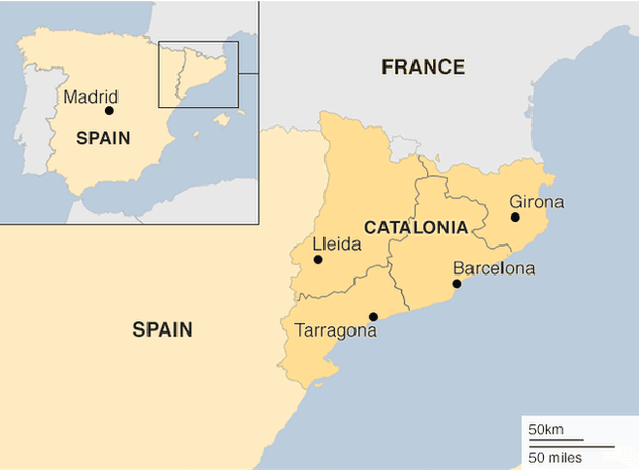


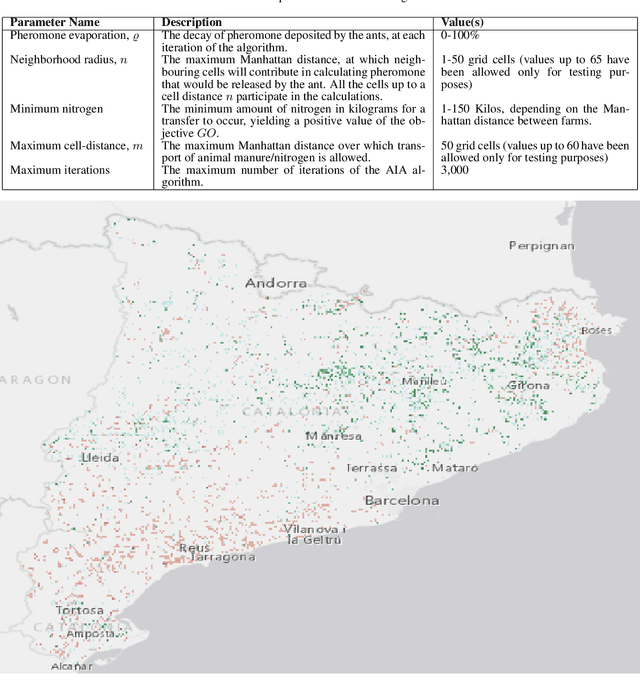
Abstract:Intensive livestock production might have a negative environmental impact, by producing large amounts of animal excrements, which, if not properly managed, can contaminate nearby water bodies with nutrient excess. However, if animal manure is exported to distant crop fields, to be used as organic fertilizer, pollution can be mitigated. It is a single-objective optimization problem, in regards to finding the best solution for the logistics process of satisfying nutrient crops needs by means of livestock manure. This paper proposes a dynamic approach to solve the problem, based on a decentralized nature-inspired cooperative technique, inspired by the foraging behavior of ants (AIA). Results provide important insights for policy-makers over the potential of using animal manure as fertilizer for crop fields, while AIA solves the problem effectively, in a fair way to the farmers and well balanced in terms of average transportation distances that need to be covered by each livestock farmer. Our work constitutes the first application of a decentralized AIA to this interesting real-world problem, in a domain where swarm intelligence methods are still under-exploited.
An Interpretable Neural Network for Configuring Programmable Wireless Environments
May 07, 2019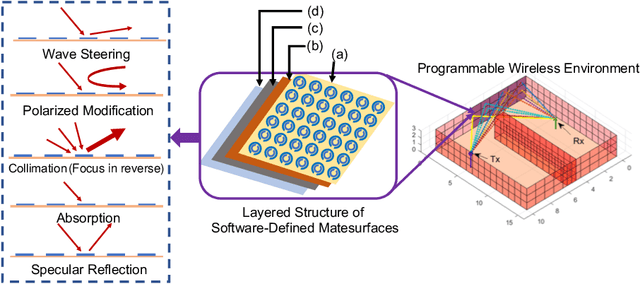
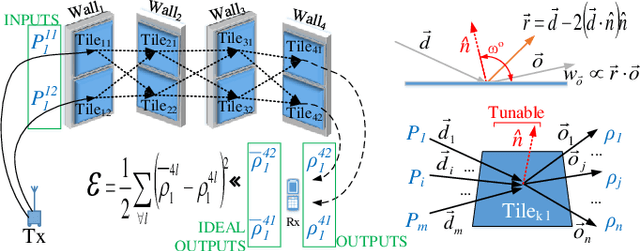
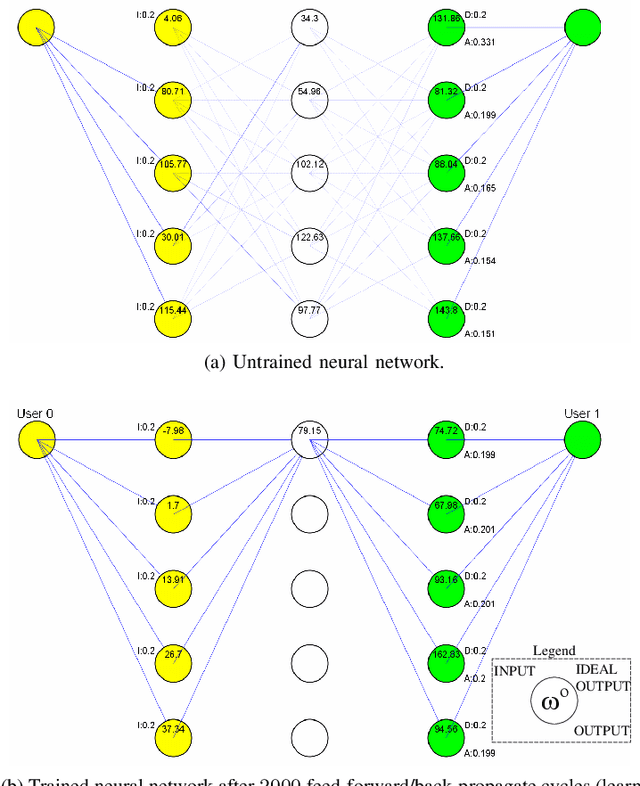
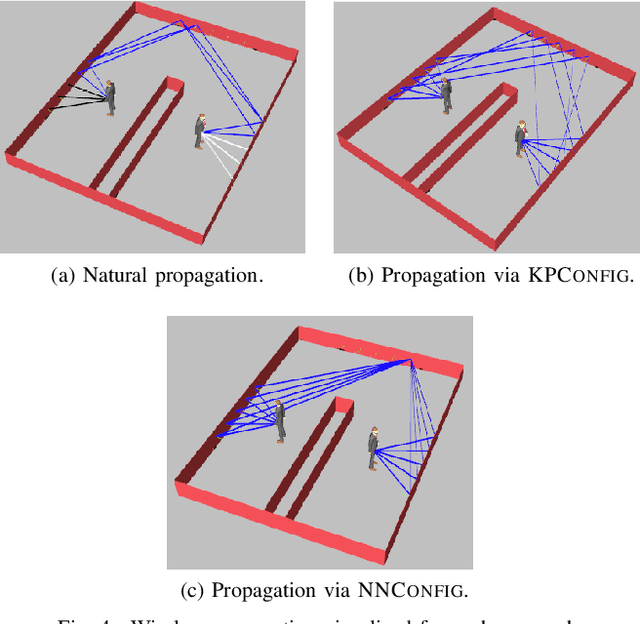
Abstract:Software-defined metasurfaces (SDMs) comprise a dense topology of basic elements called meta-atoms, exerting the highest degree of control over surface currents among intelligent panel technologies. As such, they can transform impinging electromagnetic (EM) waves in complex ways, modifying their direction, power, frequency spectrum, polarity and phase. A well-defined software interface allows for applying such functionalities to waves and inter-networking SDMs, while abstracting the underlying physics. A network of SDMs deployed over objects within an area, such as a floorplan walls, creates programmable wireless environments (PWEs) with fully customizable propagation of waves within them. This work studies the use of machine learning for configuring such environments to the benefit of users within. The methodology consists of modeling wireless propagation as a custom, interpretable, back-propagating neural network, with SDM elements as nodes and their cross-interactions as links. Following a training period the network learns the propagation basics of SDMs and configures them to facilitate the communication of users within their vicinity.
 Add to Chrome
Add to Chrome Add to Firefox
Add to Firefox Add to Edge
Add to Edge